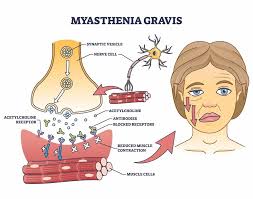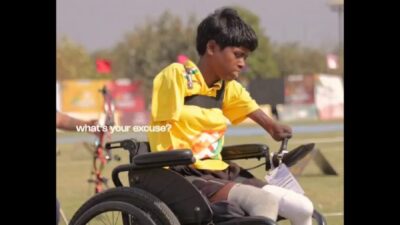Monica Seles, one of tennis’s most celebrated champions, has revealed that she has been battling myasthenia gravis, a rare and long-term autoimmune condition, for the past five years. The nine-time Grand Slam winner and former world number one spoke publicly about her diagnosis for the first time this week, in an effort to raise awareness and support for others facing similar health challenges.
In an exclusive interview with the Associated Press, the 51-year-old Serbian-American tennis icon described how the illness crept into her life gradually, at first with subtle signs that she didn’t immediately recognise as symptoms of a serious condition.
Recognising the Symptoms
Seles recalled the early stages of her struggle, noting that she began to notice changes during casual games of tennis with family and friends.
Myasthenia gravis (MG), as described by the UK’s NHS, is a rare long-term condition that causes muscle weakness, particularly in the muscles controlling the eyes, eyelids, facial expressions, chewing, swallowing, and speaking. It can, however, affect most parts of the body, often leading to fatigue and impaired physical function.
For Seles, the realisation that something was wrong was followed by a difficult emotional process.
The Courage to Speak Out
Seles said it took years before she felt ready to go public with her diagnosis. She emphasised the importance of public figures sharing their experiences with health conditions, particularly rare ones, so that others feel less isolated.
The tennis star hopes that by sharing her story, she can help others identify symptoms earlier and seek proper medical attention.

Seles-said-it-took-years-before-she-felt-ready-to-go-public-with-her-diagnosis.
A Life of Triumph and Setbacks
Seles’s career remains one of the most remarkable in the history of women’s tennis. She won eight of her nine Grand Slam singles titles before her 20th birthday, dominating the sport in the early 1990s with her aggressive baseline play and mental toughness.
But her career trajectory was abruptly altered in April 1993, when she was stabbed in the back by a spectator during a match in Hamburg, Germany. The attack, which shocked the sporting world, forced Seles out of competition for over two years.
Though she returned to win the 1996 Australian Open, she was never able to fully reclaim the dominance she had before the incident. That experience, however, gave her perspective on how to respond to life’s unexpected challenges.

Seles’s-career-remains-one-of-the-most-remarkable-in-the-history-of-women’s-tennis
Drawing on Past Resilience
Reflecting on her past, Seles explained that the mental strength she developed during her career — particularly in dealing with the aftermath of the stabbing — has helped her face this latest health battle.”
Her message to those she mentors in tennis and in life is clear:
Living with Myasthenia Gravis
MG is caused by a breakdown in communication between nerves and muscles, due to the immune system attacking the receptors that help muscles contract. The severity of the condition can vary from day to day, and even within the same day, making it unpredictable.
Symptoms can include:
-
Drooping eyelids and blurred or double vision.
-
Weakness in arms, hands, fingers, legs, and neck.
-
Difficulty speaking, chewing, swallowing, and breathing.
-
Generalised muscle fatigue that worsens with activity and improves with rest.
While there is currently no cure, treatments such as medication, therapy, and sometimes surgery can help manage symptoms. Seles has not gone into detail about her treatment plan but has indicated that it is a constant part of her life now.

MG-is-caused-by-a-breakdown-in-communication-between-nerves-and-muscles-due-to-the-immune-system-attacking-the-receptors-that-help-muscles-contract
A Champion’s Legacy
Beyond her titles and records, Seles’s impact on tennis lies in her resilience, sportsmanship, and ability to overcome adversity. She was inducted into the International Tennis Hall of Fame in 2009, an honour recognising not only her on-court achievements but also her role as an ambassador for the sport.
Her decision to speak publicly about myasthenia gravis is in keeping with that legacy, using her platform to shed light on a condition that many people may never have heard of before.

Beyond-her-titles-and-records-Seles’s-impact-on-tennis-lies-in-her-resilience-sportsmanship-and-ability-to-overcome-adversity
Public and Sporting World Reaction
Since her revelation, messages of support have poured in from fans, fellow players, and sports organisations around the world. The Women’s Tennis Association (WTA) issued a statement praising Seles for her courage, while former rivals and friends expressed admiration for her openness.
Social media has also lit up with tributes, with many people sharing their own stories of living with autoimmune diseases, inspired by Seles’s honesty.

Since-her-revelation-message-of-support-have-poured-in-from-fans-fellow-players-and-sports organisations around the world
Looking Forward
At 51, Seles remains active in mentoring young players, participating in charity events, and engaging with the tennis community. While myasthenia gravis presents new daily challenges, she says she remains committed to living life fully and staying involved in the sport she loves.
Her advice — both to aspiring athletes and those facing personal hardships — is rooted in the same mindset that made her a champion: adaptability, perseverance, and perspective.
Monica Seles’s story is one of extraordinary highs and deep challenges — from dominating the tennis world as a teenager, to surviving a career-threatening attack, to now confronting a rare and debilitating disease. Through it all, her ability to adapt, inspire, and lead by example continues to define her legacy.
Her latest battle may be fought away from the bright lights of centre court, but as with every challenge she has faced, Monica Seles is approaching it with the heart of a champion.
Click here to watch more!



















Comments